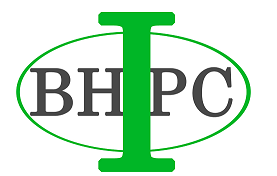J Gen Intern Med. 2016 May 20. [Epub ahead of print]
Wednesday, May 25, 2016
New publication by IBH-PC's Gail Rose
Gail Rose, PhD, Associate Project Director, just published this work from her "other life" where she develops and evaluates new ways to help people with unhealthy drinking.
Brief interventions for unhealthy drinking in primary care settings are efficacious, but underutilized. Efforts to improve rates of brief intervention though provider education and office systems redesign have had limited impact. Our novel brief intervention uses interactive voice response (IVR) to provide information and advice directly to unhealthy drinkers before a physician office visit, with the goals of stimulating in-office dialogue about drinking and decreasing unhealthy drinking. This automated approach is potentially scalable for wide application.
We aimed to examine the effect of a pre-visit IVR-delivered brief alcohol intervention (IVR-BI) on patient-provider discussions of alcohol during the visit.
This was a parallel group randomized controlled trial with two treatment arms: 1) IVR-BI or 2) usual care (no IVR-BI).
In all, 1,567 patients were recruited from eight university medical center-affiliated internal medicine and family medicine clinics.
IVR-BI is a brief alcohol intervention delivered by automated telephone. It has four components, based on the intervention steps outlined in the National Institute of Alcohol Abuse and Alcoholism guidelines for clinicians: 1) ask about alcohol use, 2) assess for alcohol use disorders, 3) advise patient to cut down or quit drinking, and 4) follow up at subsequent visits.
Outcomes were patient reported: patient-provider discussion of alcohol during the visit; patient initiation of the discussion; and provider's recommendation about the patient's alcohol use.
Patients randomized to IVR-BI were more likely to have reported discussing alcohol with their provider (52 % vs. 44 %, p = 0.003), bringing up the topic themselves (20 % vs. 12 %, p < 0.001), and receiving a recommendation (20 % vs. 14 %, p < 0.001). Other predictors of outcome included baseline consumption, education, age, and alcohol use disorder diagnosis.
Providing automated brief interventions to patients prior to a primary care visit promotes discussion about unhealthy drinking and increases specific professional advice regarding changing drinking behavior.
- Ben Littenberg
Wednesday, May 11, 2016
Integrating Behavioral Health in Primary Care Using Lean Workflow Analysis: A Case Study
This paper describes the practice change approach that evolved into the PCORI IBH-PC intervention.
Constance van Eeghen, Benjamin Littenberg, Melissa D. Holman, and Rodger Kessler
J Am Board Fam Med May-June 2016; 29:385-393; doi:10.3122/jabfm.2016.03.
Background: Primary care offices are integrating behavioral health (BH) clinicians into their practices. Implementing such a change is complex, difficult, and time consuming. Lean workflow analysis may be an efficient, effective, and acceptable method for use during integration. The objectives of this study were to observe BH integration into primary care and to measure its impact.
Methods: This was a prospective, mixed-methods case study in a primary care practice that served 8,426 patients over a 17-month period, with 652 patients referred to BH services. Secondary measures included primary care visits resulting in BH referrals, referrals resulting in scheduled appointments, time from referral to the scheduled appointment, and time from the referral to the first visit. Providers and staff were surveyed on the Lean method.
Results: Referrals increased from 23 to 37 per 1000 visits (P < .001). Referrals resulted in more scheduled (60% to 74%; P < .001) and arrived visits (44% to 53%; P = .025). Time from referral to the first scheduled visit decreased (hazard ratio, 1.60; 95% confidence interval, 1.37–1.88) as did time to first arrived visit (hazard ratio, 1.36; 95% confidence interval, 1.14–1.62). Survey responses and comments were positive.
Conclusions: This pilot integration of BH showed significant improvements in treatment initiation and other measures. Strengths of Lean analysis included workflow improvement, system perspective, and project success. Further evaluation is indicated.
Subscribe to:
Posts (Atom)
